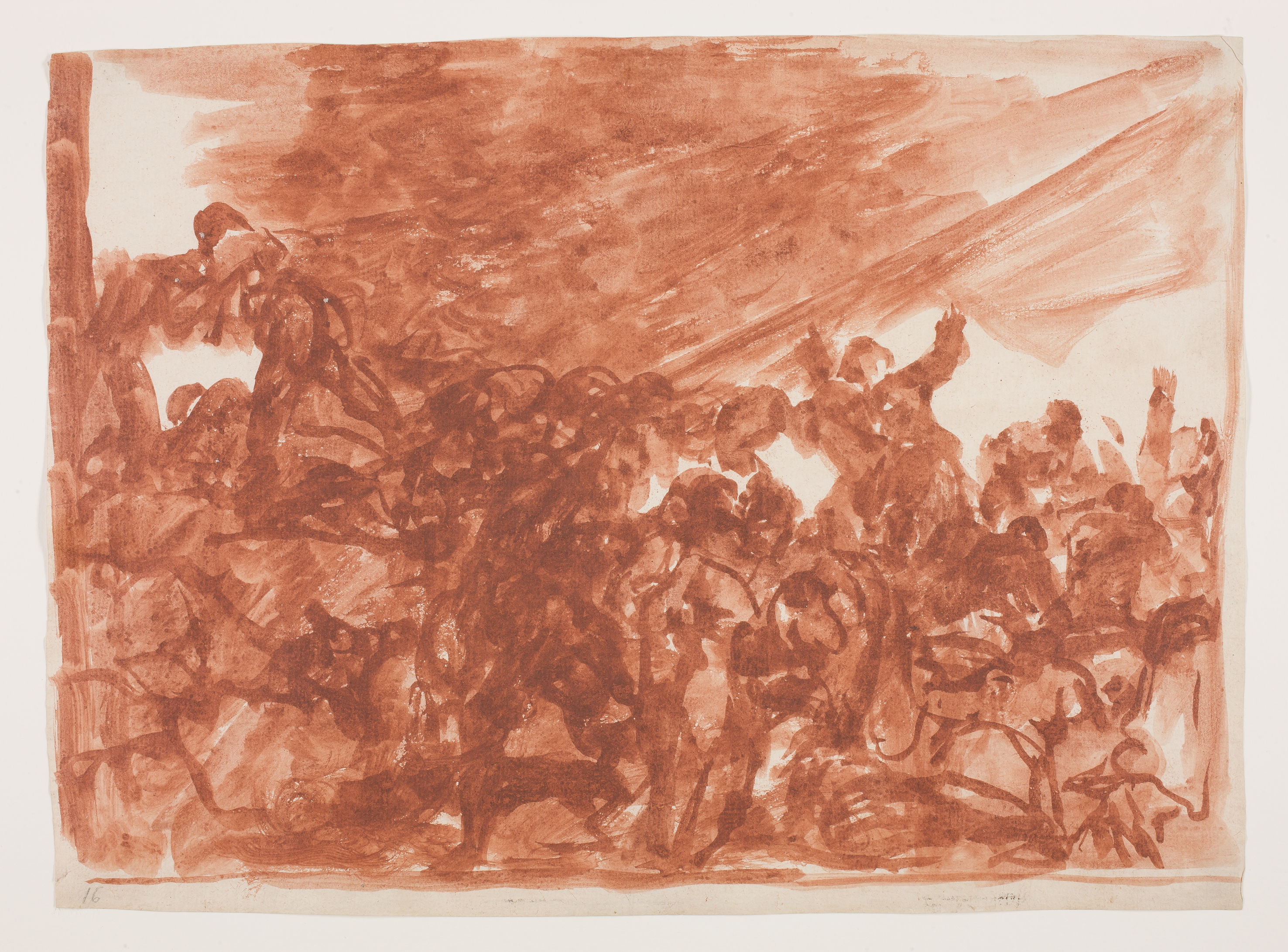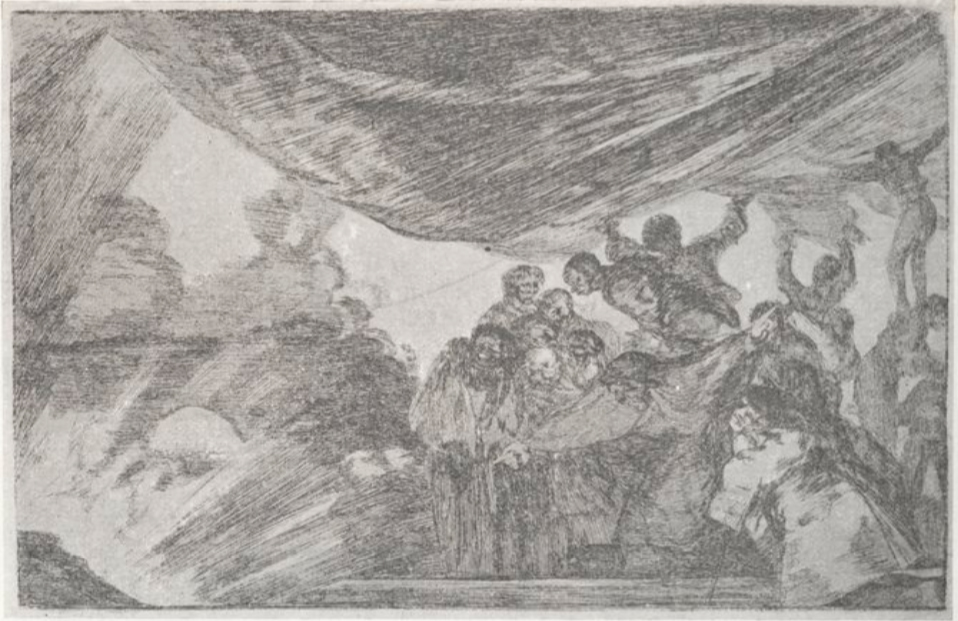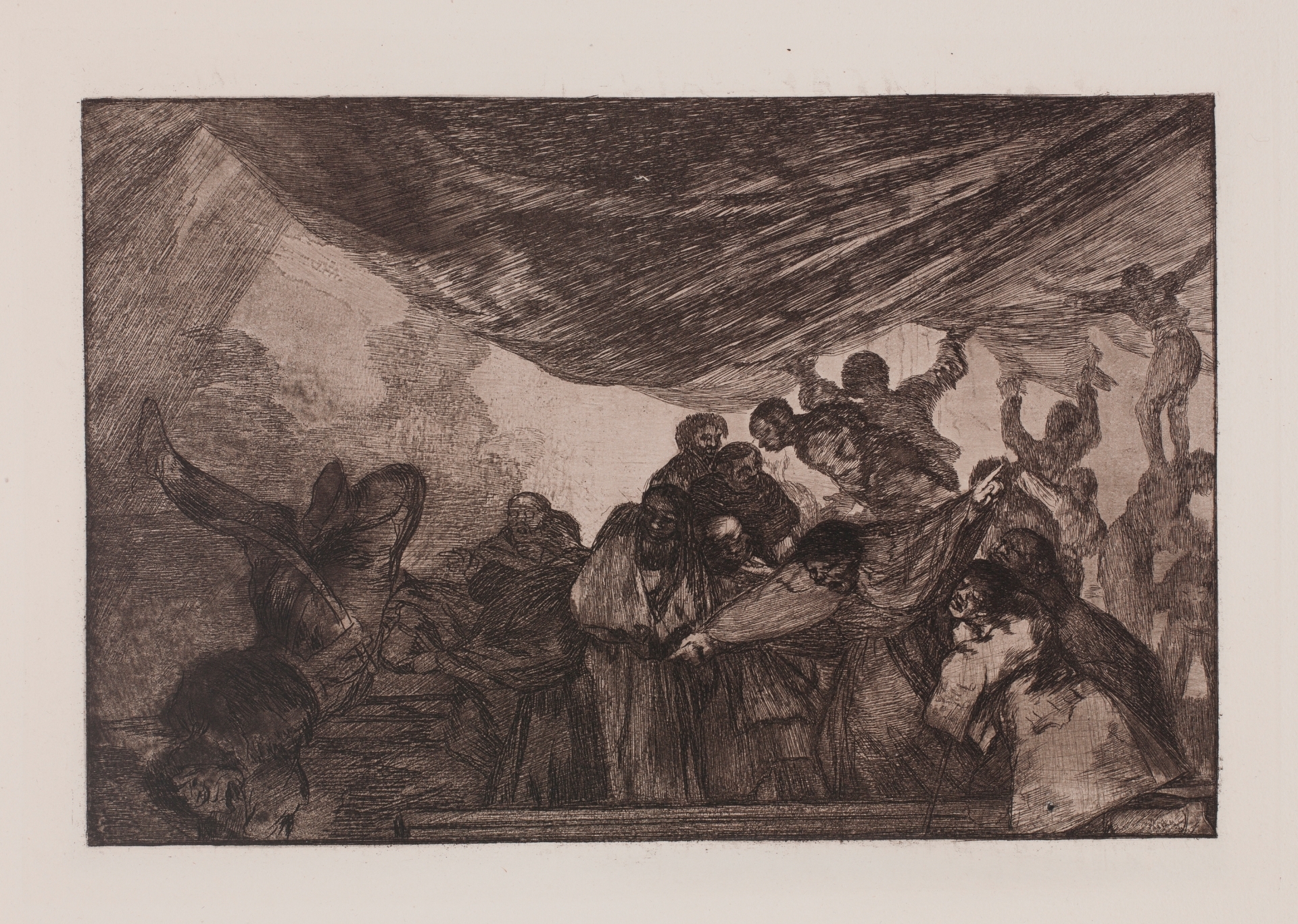
|
|
Disparate Claro
[Clear Folly]
Delteil 216.2 (of 3), Harris 262.II (of III) with the original Proverbios title of Sin Recomendarse a Dios ni Al Diablo [Without commending himself either to God or the Devil]
etching
with aquatint,
circa 1815-19, a very fine impression on medium-heavy ivory wove paper, with the J.G.O. and
palmette watermarks, with full margins* (including the original binding
perforations and corresponding discoloration along the far left margin),
the second state (of three), from the first edition (1864), before the
added number upper right, traces of old hinges on the reverse, in very good condition
P. 245x352 mm. S. 334x496 mm.

|
This remarkable print, Disparate Claro (Plate 15 of the Proverbios, as the series was later called in the successive Calcografia editions) is part of a fantastical series that
Goya began in 1815, following up on the Desastres de la Guerra, which he had executed in the previous five years; he had indeed initially titled the series Disparates in his first trial impressions, in view of detailing the depths of human folly.
The
historical context
following the Spanish War of Independence strongly affected the
artist, as he watched the collapse the progressive world to which he
had become attached. He most probably worked on the series at least
until 1819, at
which
time political changes, notably the insurrection and triumph of General Rafael Rieg at
the beginning of the Trienio Liberal, which generated an
atmosphere of hope that was inconsistent with the oppressive atmosphere of the Disparates.
The series most probably
remained unfinished and incomplete, with no clear thematic guidelines,
though it is clear that Goya meticulously prepared the etchings with
prelimnary drawings and trial states. The first edition was printed posthumously in 1864 by Laureano
Potenciano, in an edition of three hundred. It was published with the title of Proverbios,
implying that the images alluded to
popular adages, as per the titling, reiterated by Harris.
The order of the prints in the
first edition was arbitrary, and despite this, the order was maintained in
subsequent editions, due to the numbering of the plates in the second
edition, as published in 1875 by the Calcografia.
The themes that
seem to give
meaning and unity to this exceptional series are a universal critical
expression of
the essence of human experience: in the present print, Goya seems to show an
exasperated popular aversion to the horrors of war, with a soldier, farleft,
head over heels, thrown over a parapet by an irately animated
throng, interpreted as one of the most anti-militaristic of the
series. The reality however may well be rather more complicated.

Examining the preparatory drawing (D04289, Prado, right)
in relation to the early states
of the print demonstrates Goya's creative process and the way in which
he transformed the composition for expressive purposes. Here, the
billowing canopy is clearly shown, the tumultuous horde is indistinct,
the parapet outlined as a rocky precipice in only a rather sketchy
foregound, and the falling figure is not yet really evident.
These differences led the Spanish art historian Sánchez Cantón** to call it Disparate turbulento, describing it as
an unrecorded Folly, although he later revised his description of the wash sketch as indeed preparatory for the Disparate Claro.
 There is a rare first state (left,
here taken from the original Delteil catalogue), with most of the figures on the
right in place, but before the plummeting soldier and two background
figures on the left, and before the aquatint wash. The lower left
corner is taken up with a radiant burst of light, and it is unclear if
Goya intended to add the plummeting soldier at this early stage.
There is a rare first state (left,
here taken from the original Delteil catalogue), with most of the figures on the
right in place, but before the plummeting soldier and two background
figures on the left, and before the aquatint wash. The lower left
corner is taken up with a radiant burst of light, and it is unclear if
Goya intended to add the plummeting soldier at this early stage.
These various transformations,
and the context of Goya's work at this time, have led to a more
political interpretation, a criticism of both the clerics who sought
excommunications against the liberal military, and the more reactionary
aristocracy who blindly stood by during the subsequent absolutist
repression, as
exemplified by the kneeling characters on the right.
* Harris gives sheet size for this edition as 330x500 mm.; the first edition impression in the Prado measures 337 x 502 mm.
** Goya. I. Cien dibujos inéditos (1928)




 There is a rare first state (
There is a rare first state (